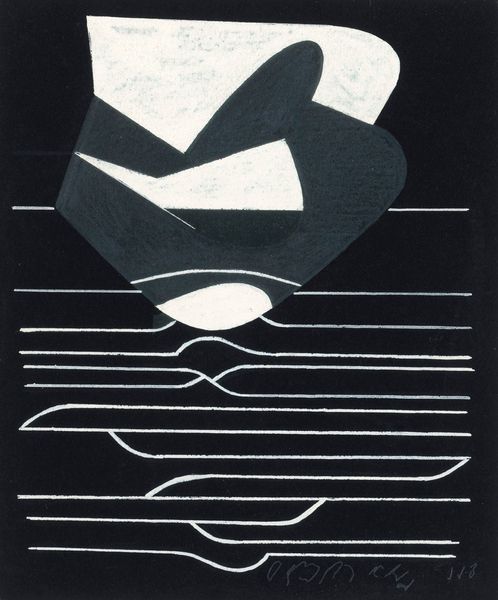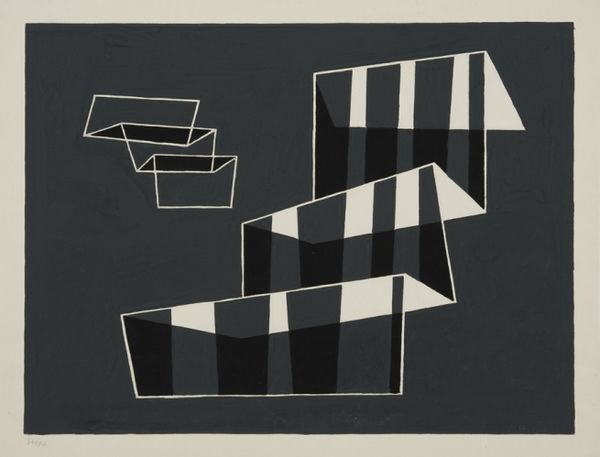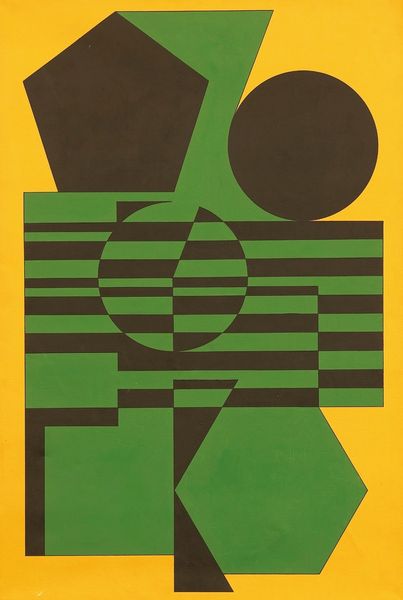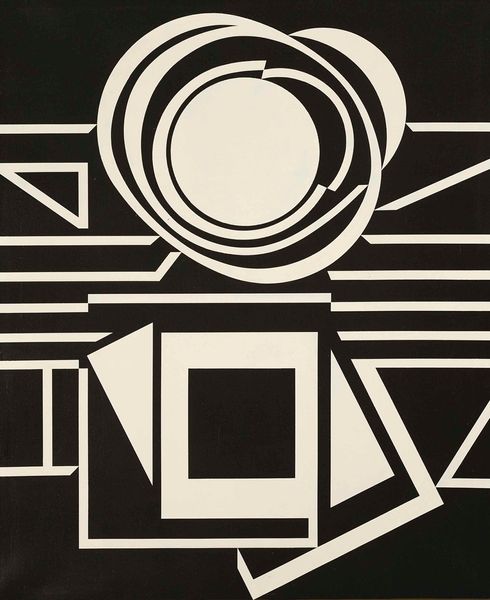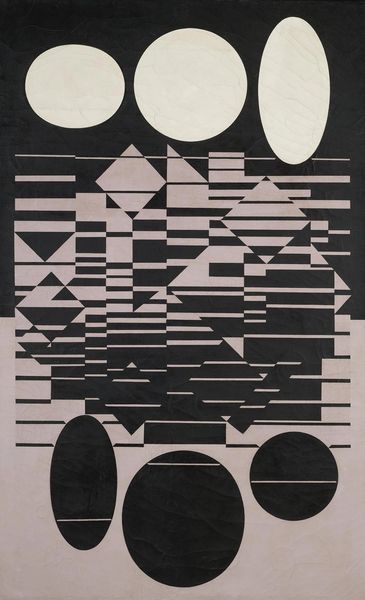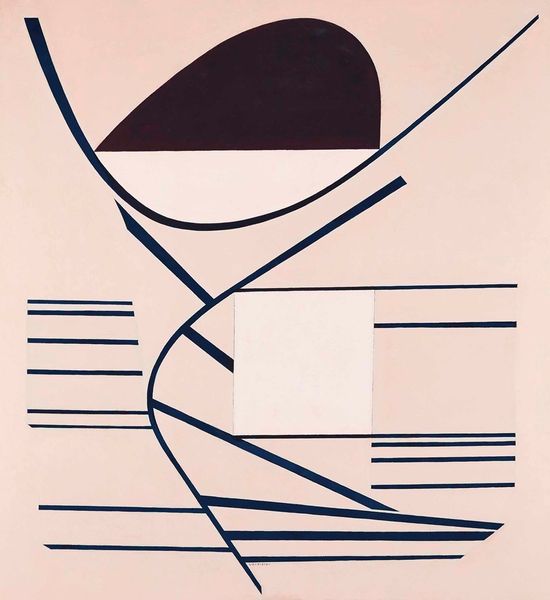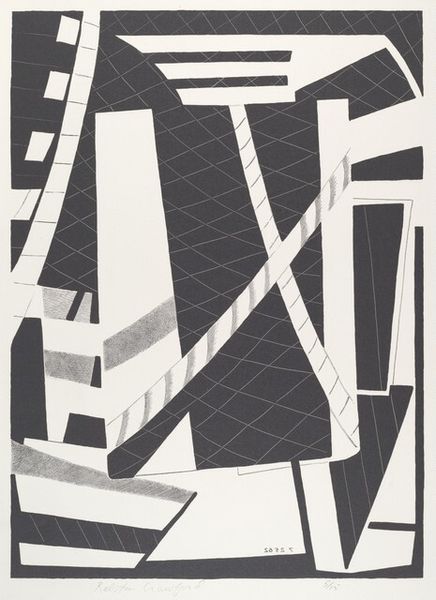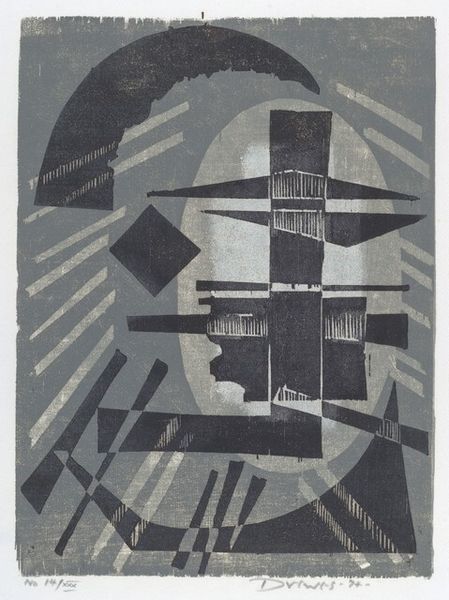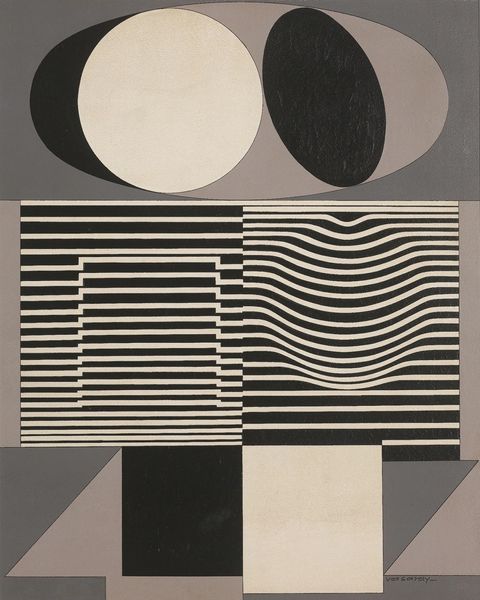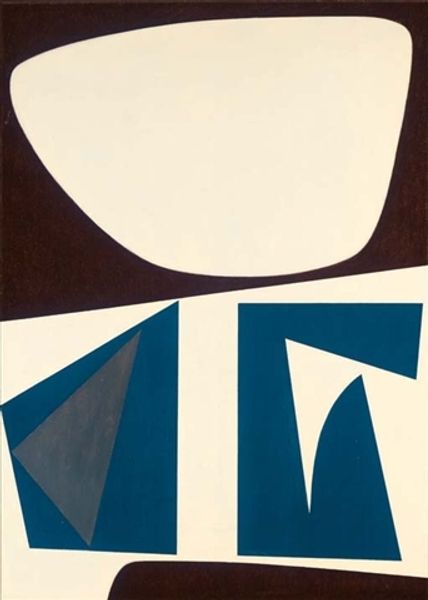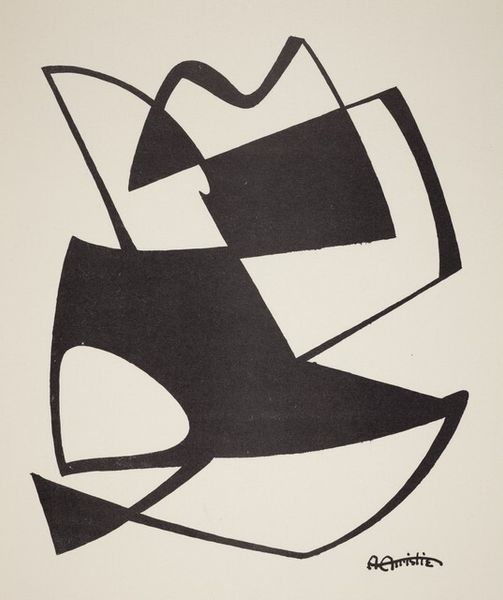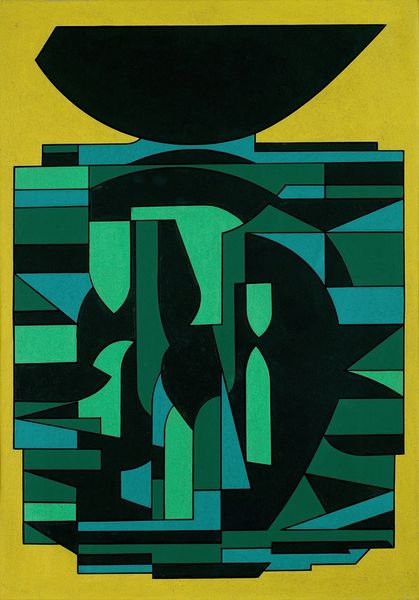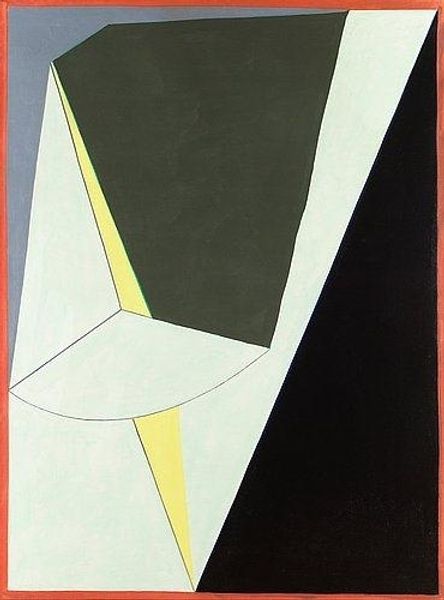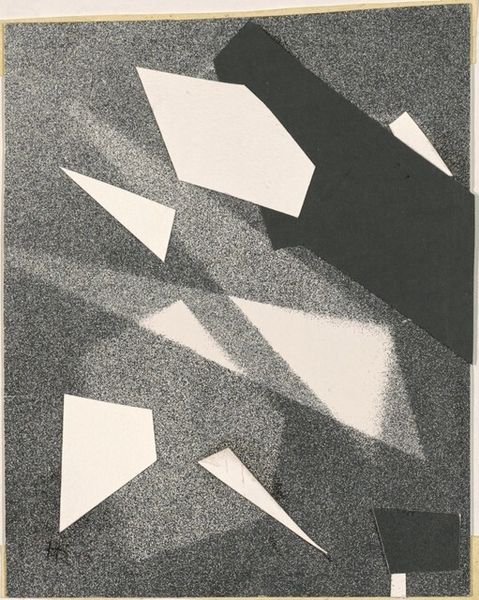
op-art
op art
geometric
geometric-abstraction
abstraction
line
modernism
Copyright: Modern Artists: Artvee
Curator: Right now we're looking at Victor Vasarely's "Latorça," created between 1952 and 1973. It is an Op Art piece. Editor: It's stark, isn’t it? The bold contrast, like something out of a science fiction film from that period. Geometric and quite compelling. What exactly am I seeing? Curator: Well, in terms of materials, it's most likely screenprint on paper. Vasarely's Op Art was hugely popular, particularly with its mass production accessibility. Screenprinting would've allowed for relatively quick reproduction. Also, notice how this affects distribution to the broader public and therefore art’s potential to democratize design principles. Editor: Interesting. You can see how Op Art found its way onto album covers and textiles back then, impacting popular culture. But back to the image, I see that circle cut with a diagonal line above more structured geometric shapes. How does Vasarely make us "see?" Curator: Vasarely meticulously explores our visual perception. The hard-edged shapes force the eye to decipher figure-ground relationships, activating our senses, and in doing so we see the work through movement. We bring it to life. Editor: And the monochrome palette really intensifies the experience, don't you think? Limiting color allows the visual tricks to truly pop. I'm considering how it echoes the post-war period when artists explored radical approaches. Curator: Exactly. And the institution and the structures through which we typically engage with images are made strange. No human figure, no heroic narrative, but an emphasis on geometric form and industrial process. Consider how this reflects anxieties of technology, dehumanization and mass production. Editor: It’s funny; for something so cool and precise, I feel the echoes of societal disruption embedded within it. Something very timely today too. Curator: Absolutely. So, while the piece might initially appear purely abstract, paying attention to how it was made and the period in which it was produced reveals some broader cultural statements and, potentially, critique. Editor: And that tension, that unease and engagement, ensures its place in the continuing story of modernism. Curator: Well said. It really forces you to keep thinking, long after you first look.
Comments
No comments
Be the first to comment and join the conversation on the ultimate creative platform.
